
3 minute read
PUTTING GREENS
Observations
The putting surfaces, TI greens established with a blend of L-93 and Crenshaw creeping bent grass, are part of the original construction from 2002. The greens were smooth, healthy, and dense with roots extended 4-5 inches into the profile and good density indicating they are healthy heading into the stressful summer season.
Advertisement
A SubAir vacuum system and fans (installed in 2016) are utilized when necessary to promote TI health on the greens.
The collars are primarily ‘Cavalier’ zoysiagrass but were contaminated with bermuda grass and ‘Palisade’ zoysiagrass from the rough, a condition inevitable in the Dallas area.
Recommendations
Rebuild the putting greens and install hydronics. Implementing a well-engineered root zone mix, modern grass technology and hydronics will provide the best playing conditions for the greatest number of days.
Maintain the infrastructure for turf fan installations as another tool to alleviate putting green stress.
Do not select ultradwarf bermuda grass. If the goal is to provide the best putting surface conditions for the greatest number of days throughout the season, creeping bent grass with modern infrastructure is the best option.
Allow USGA experts to provide recommendations related to decisions regarding a bent grass variety and root zone mix for the greens.
Fairways
Observations
The fairways are primarily Cavalier zoysiagrass and were originally sand capped during construction. There is an approximate 4” deep layer of organic matter layer above the original sand capping material. There is also a sod layer between the organic matter layer and original sand capping material.
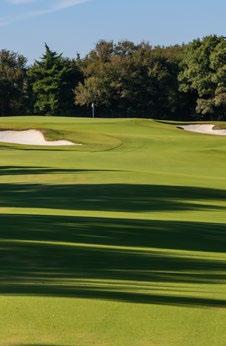
Cavalier zoysiagrass is not readily available. The most reliable source of this variety is grown on heavy clay soil. Installing heavy clay soil on top of a sand capped fairways is not recommended as it will result in shallow rooting and poor drainage.
The bermuda grass has contaminated the zoysiagrass fairways on several holes and will need to be addressed during the renovation.
Recommendations
Address the sod and organic layers that have accumulated in the fairways to provide a well-drained soil resulting in firm conditions and healthy turf.
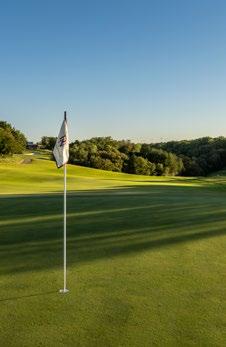
Install internal drainage in low-lying and habitually wet areas.
Stripping the fairways and re-grassing will provide the best opportunity to eradicate the bermuda grass contamination.
Hollow core aeration, aggressive verticutting and other aggressive cultural practices should only be performed on zoysiagrass during the summer active growing months.
Teeing Ground
Observations
Tees are Diamond zoysiagrass that were originally constructed out of a sand-based root zone mix.
While performing well from an agronomic standpoint, many of them have become unlevel and the edges have sloughed off over time due to settling and the age of the tees.
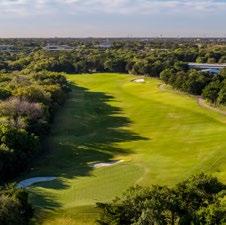
Recommendations
Strip and re-level all tees during the renovation while the course is closed. Consider re-sodding the tees with Zeon or Stadium zoysiagrass, similar to what is used on the fairways.
Both Zeon and Stadium zoysiagrass perform very well at teeing ground height cuts, better tolerate environmental stresses and higher traffic area levels.
BUNKERS & TREES
Bunker Observation
The bunkers were last renovated in 2014 and are nearing the end of their useful life.
Bunker Recommendations
The Club plans to utilize the Better Billy Bunker™ liner system which has been used by courses throughout the country with great success.
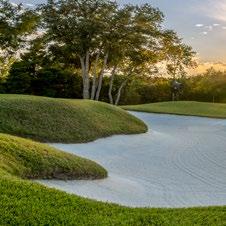
Tree Maintenance Observation
There are a select number of trees on the course that are negatively affecting turf health and playability.
Tree Maintenance Recommendation
During the course closure, remove trees that are negatively affecting turf health and playability throughout the course to expand playing corridors, traffic flow and course conditions.
Irrigation
Observations
The irrigation system is approximately 22-23 years old. The pump station is wellmaintained with upgrades installed as needed.
The piping network is PVC with a typical life expectancy of 25-35 years.
Recommendation
The piping network is nearing its useful life requiring a decision by the Club whether to replace it during the course renovation.
The course closure presents an opportunity to conduct the work despite no pressing need to completely replace all pipes at this time.
While it is difficult to predict how rapidly the pipe network will deteriorate over the next 5-10 years, the Club should anticipate and plan for a complete replacement within the next 10 years.
About the USGA Course Consulting Service
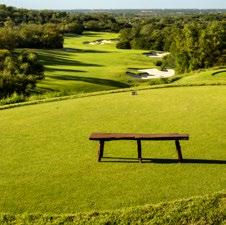
As a not-for-profit agency that is free from commercial connections, the USGA Course Consulting Service is dedicated to providing impartial, expert guidance on decisions that can affect the playing quality, operational efficiency, and sustainability of your course.
First started in 1953, the USGA Course Consulting Service permits individual facilities to reap the benefits of on-site visits by highly skilled USGA agronomists located in Green Section offices throughout the country.





